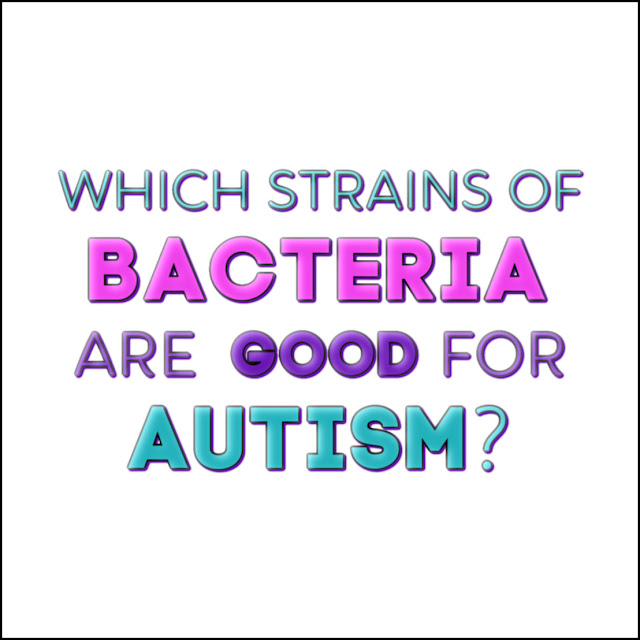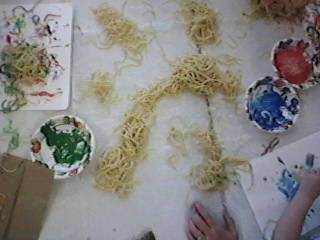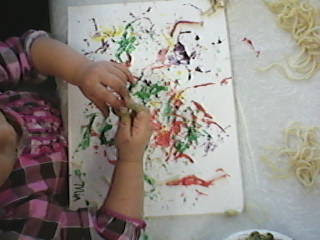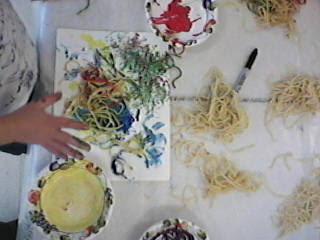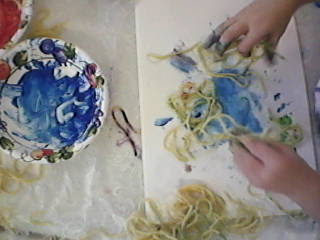Gut Health and Autism
It is true that autism is generally not curable, but in most cases, people try different therapies to improve autism spectrum disorders. Therapies like occupational therapy, speech therapy, and applied behavioral analysis are the most common ways to treat autism and reduce the effects of autism, but treating the gut can help too!
This GUEST POST contains Amazon and other affiliate links. The information in this post is not written by a medical doctor, be sure to contact your physician before starting any new treatments.
Is anything more important for autism than brain foods? Yes, some foods like fatty fish, milk, egg, nuts, chocolates, and others may help the brain develop and increase its functionality. However, that is also challenging as many autistic children have weakened digestive health and may suffer from irritable bowel syndrome.
Why do many children with autism suffer from weakened gut conditions? Our brains have strong correlations with the gut. Autism can impair brain and gut development. Improving the gut can improve brain development, meaning alleviation from some of the symptoms of autistic spectrum disorder and other sensory processing disorders.
Gut Treatments for Autism
There are many suggested treatments for improving gut function. Below are some popular options for autism that you may want to try.
1. Use of Probiotics and Prebiotics
Probiotics are good bacteria that aid our digestion and improve the immune system. Some of the common beneficial bacteria include bifidobacteria, lactobacilli, and saccharomycetes. Autism probiotics are an effective treatment since the good bacteria kills the bad ones and helps provide more helpful benefits for the gut.
On the other hand, prebiotics are food components that boost growth to these beneficial bacterias in the gut. Probiotics are common in food items like kimchi, kefir, miso, and yogurt, while prebiotics is common in items like garlic, onions, bananas, asparagus, leeks, and more.
Regular use of probiotics and prebiotics may improve leaky gut and prepare the body to accept all different kinds of foods. Studies have found improved gut condition increases neurotransmitter production and helps boost brain functions.
2. Focus on Diets
Because of impaired guts, children suffering from ASD often face mineral and vitamin deficiencies. Also, the lack of fiber can worsen gut imbalance and often contributes to leaky gut symptoms. Many children on the spectrum are sensitive to proteins like gluten and casein in their diet.
To overcome these hurdles, parents often put their children on a ketogenic diet. It is a common belief that a keto diet gives children with austim foods that are rich with omega-3 fatty acids. Foods like sardines, tuna, salmon, flaxseed, chia seed, and walnuts are good sources of omega-3 fatty acids. Some also try dark chocolate to help enhance brain functionality.
3. Antibiotics
Under a physician's prescription, some try antibiotics like vancomycin but that is usually only for extreme cases. Antibiotics can wipe the gut of both good and bad bacteria leaving negative consequences. As children with autism have more bad bacterias over good ones, trying antibiotics can alleviate some conditions like chronic diarrhea.
Always consult a doctor for the best therapeutic dose of any medication or herbal remedy. Some people also try antibiotics and probiotics together. In such a case, try fermented products like curd, yogurt, or kefir to help balance gut bacteria.
4. Fecal Transplant
Fecal transplant sounds absolutely bizarre to anyone who is reading it for the first time, but the concept is to transplant fecal material into the GI tract of the patient. This allows a complete shift of microbiome to a recipient without hurting anyone's digestive system.
5. Microbiota Transfer Therapy
This is a new solution where patients use antibiotics to clear their gut. After clearing their gut, the patient is put on high-dose, standard human gut microbiota for several weeks. This not only improve GI symptoms, but it can also normalize gut microbiomes to that of healthy individuals.
Try Probiotics over Others
Though we have discussed some possible treatments, most of the options require a physician's help. A diet plan doesn't work well with conditions like diarrhea, and you may also need to consult a nutritionist. These days, there's a lot of focus on probiotics that you can use at home to help your child to improve their gut problems which may, in turn, help improve their autism symptoms.
For most people, probiotics have no major side effects outside of mild gas and bloating. Some of the best benefits of probiotic use include:
1. Probiotics help the body fight cold and flu viruses.
2. Probiotics can boost vitamin B12 in our body, resulting in more energy.
3. Probiotics are helpful in maintaining the ideal body weight.
4. Probiotics can boost the immune system naturally.
5. Probiotics can help eliminate bad breath.
Probiotic Strains and Autism
When it comes to probiotics, people often recommend yogurt, fruits like bananas, mangoes, papayas, and herbs like peppermint and fennel. These foods can help to grow all good bacteria in your gut. The question is which strains of bacteria are good for people with autism?
Studies have shown that two of the best probiotic strains to help in IBS and autism are bifidobacterium and lactobacillus. Using these with probiotic-rich foods can have synergistic effects to help improve gut functions.
Besides that, lactobacillus reuteri showed promising results in improving social behaviors in kids with autism. A study conducted in Texas found this strain of bacteria to release more oxytocin and improve the social behavior in children with autism. No wonder it can heal gut problems too. Using this form of probiotics also showed a wide array of health benefits including myoskeletal maintenance, improved metabolism, wound healing, and more.
Bacteroid fragilis is also beneficial for kids with autism. A study from the California Institute of Technology found this strain has the unique ability to penetrate the mucus layer and embed itself to repair the intestinal cell lining, which is a big bonus to anyone suffering from leaky guts.
Things to Avoid with Probiotics
Though probiotics have no major side effects, it's prohibited for post-cardiac surgery patients, patients with bloody stools like hematochezia or melena, patients with pancreatic disorders, and infants. Other than that, anyone with a severely weakened immune system should consult with a doctor before taking probiotics or any other over the counter remedies.
The Bottom Line
It's been proven that there's a strong correlation between our brains and our guts. If you can fix either of them, the other one will likely react to that positive feedback. When it comes to autism, this correlation is a key part of further study to lessen the effects and work toward a cure.
You'll likely see significant behavioral changes, improved social interactions, and a big margin of improvement in your child’s learning abiity with gut treatment. In short, treating the gut can result in a better lifestyle for anyone suffering from autism spectrum disorder.
Recommended:


